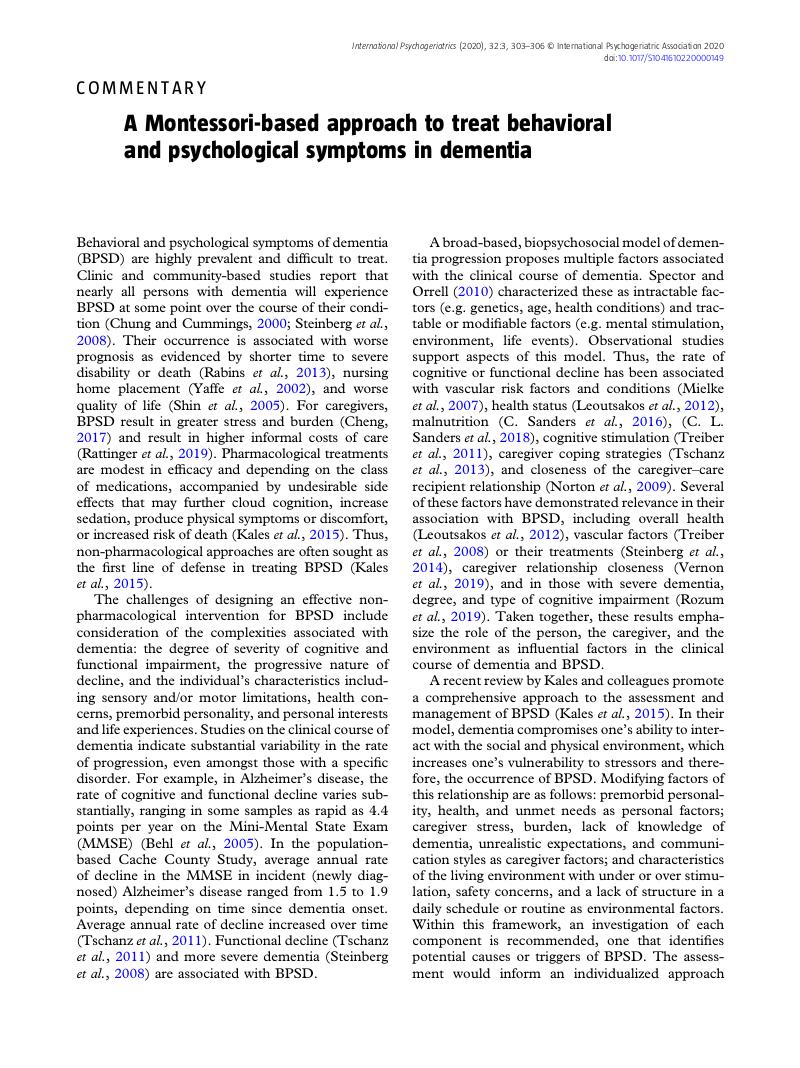Crossref Citations
This article has been cited by the following publications. This list is generated based on data provided by Crossref.
Raghuraman, Shruti
and
Tischler, Victoria
2021.
‘The Jigsaw Culture of Care’: A qualitative analysis of Montessori-Based programming for dementia care in the United Kingdom.
Dementia,
Vol. 20,
Issue. 8,
p.
2876.
Mousavi, Seyed Abolfazl
Jarareh, Jamshid
Mohammadiarya, Ali Reza
Karami, Behnaz
and
Keshavarz Mohammadi, Robabeh
2021.
Effects of Cognitive Rehabilitation on the Psychological Capital of the Elderly with Dementia.
Archives of Neuroscience,
Vol. 8,
Issue. 3,
Bautrant, Thierry
Franqui, Caroline
Clément, Hossein
Rabault, Maurice
Masseboeuf, Faima
Pastore, Manon
Pardo, Magali
Brandi, Yannick
Drouin, Nicolas
Brice, Anne-Daphnée
and
Grino, Michel
2022.
A pragmatic trial testing a tailored non pharmacologic therapies on nocturnal behavioral and psychological symptoms associated with dementia.
Geriatric Nursing,
Vol. 43,
Issue. ,
p.
85.



